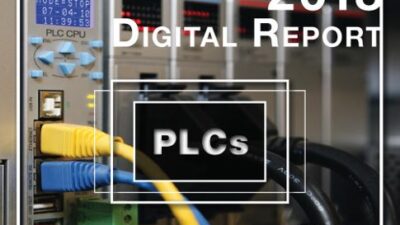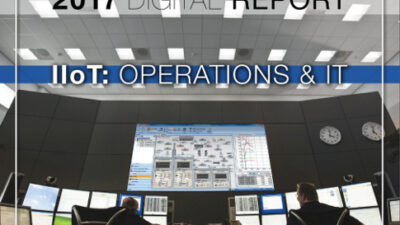As micro PLCs pack in more functions, logic-based system may be approaching the point where obsolescence is a thing of the past. Control Engineering spoke recently with several manufacturers of micro PLCs, about trends about these and other forms of logic. For more on this subject, look for a September 2005 issue article on Micro PLCs under Archive at Control Engineering online .
Integrated architecture offers powerful capabilities, according to Mike Miclot, Rockwell Automation , director, Automation, Control and Information. One platform can be used for plant-wide control, discrete and process applications alike. Programming is done in one development environment and is scalable for process, sequential, motion, and safety applications, Miclot said. A tag-based architecture allows seamless information flow from programming, to HMI, automation to IT and back. Advantages, Miclot said, include reduction of physical floor space, less need for cabinets, solid-state logic, less wiring/closer proximity to machines, unified services, better security, ease of assembly through modular designs, unified networking, as well as diagnostics for faster startup and easier troubleshooting.
Joe Rubino, Omron Electric, software product marketing manager for Omron Electronics LLC , said, there’s no line any more between micro PLC and other “sizes” of PLCs. Small brick PLCs today are as powerful as a full rack-based system. Trends include flexibility for I/O options, more unified programming, higher speeds and scan times, and generally more features for less cost. “It’s definitely getting blurry from mid-sized to micro PLCs as customers seek to lower fixed I/O costs with features available in smaller PLCs. There are no more islands; people need to move data as they can with larger systems,” Rubino said.
Paul Scanlon, GE Fanuc manager of product marketing, noted that micro PLCs, with small foot-print and low cost, are still largely rack-based, but contain a much higher level of functionality. I/O count drives the functionality. Analog for PID, a high-speed counter, or high-speed motion, are among typical add-ons today. Connie Chick, business manager for controllers at GE Fanuc, said, in some cases, “It’s a question of how much functionality engineers can get in a box for $100. Traditional PLC thinking is one program and one device per function. A programmable logic controller offers advanced motion, process, and other functions. Large PLCs can equal PACs in functionality. Choosing between them depends on the application. Higher-level functions of a PAC offer PC-type abilities: networking, software functions, historian, ease of connecting to a higher-level system within the facility, without translation or slowing it down. A stand-alone application wouldn’t necessarily need that level of communication or integration; you could do that with traditional PLC. The power to integrate motion in the same device also is available.”
Jim Berlin, GE Fanuc vice president, hardware technology, said, “In most applications, I/O points, physical space, budget, and/or speed are the critical factors. With PLCs, PACs, embedded computers, Microsoft Windows CE panels, we have many more choices to offer today, with the same software used to program each option.” Chick noted that we’re moving into the “end of ob-solescence,” meaning systems can be upgraded in place, piece by piece, without need for rip and replace. Use of IEC 6-1131 languages allows preservation of programming when moving among control vendors, she added.
—Mark T. Hoske, Control Engineering, [email protected]


